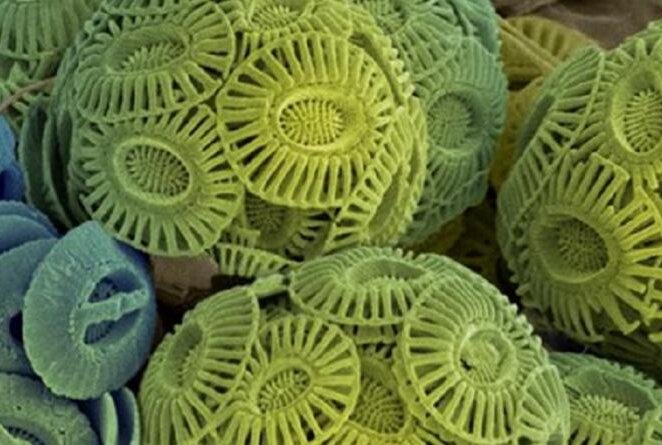Important Facts For Prelims
Coccolithophores
- 26 Jun 2020
- 2 min read
Why in News
Recently, the National Centre for Polar and Ocean Research (NCPOR) has carried out the study of Coccolithophores (microscopic ancient marine algae) and found that there is a decrease in the concentration of oceanic calcium carbonate (CaCO3) in the southern Indian ocean.
Key Points
- Coccolithophores are single-celled algae living in the upper layers of the world’s oceans.
- They calcify marine phytoplankton that produce up to 40% of open ocean calcium carbonate and are responsible for 20% of the global net marine primary productivity.
- They build exoskeletons from individual CaCO3 plates consisting of chalk and seashells.
- Though carbon dioxide (CO2) is produced during the formation of these plates, coccolithophores help in removing it from the atmosphere and ocean by consuming it during photosynthesis.
- At equilibrium, they absorb more CO2 than they produce, which is beneficial for the ocean ecosystem.
- Abundance and diversity enrichment of coccolithophores in the southern Indian Ocean is highly dependent on time and influenced by various environmental factors such as silicate concentrations, calcium carbonate concentration, diatom abundance, light intensity and availability of macro and possibly micronutrient concentrations (marine pollution).
- Diatoms are single-celled algae which occur after sea ice breakdown with climate change and ocean acidification.
- Diatoms increase the silicate concentration in the waters and which in turn decreases CaCO3 and reduces coccolithophores diversity.
- It will affect the growth and skeleton structure of coccolithophores, with potential significance for the world ocean ecosystem.
- The study points to climate change as a major reason for the altered coccolithophore calcification rate which is important for bringing positive changes in the marine ecosystem and the global carbon cycle.






